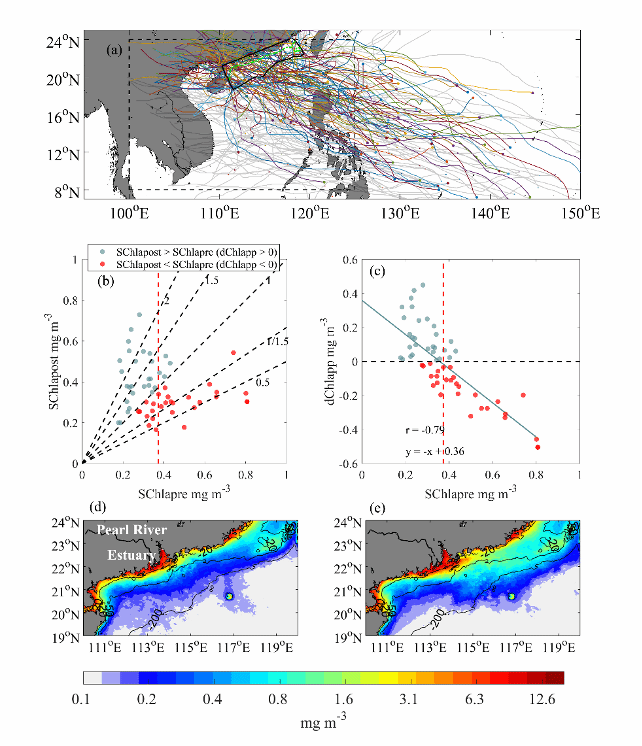Abstract
By disturbing the upper ocean, typhoons may play a crucial role in marine ecosystems. Previous studies mostly demonstrated surface chlorophyll a (Chl a) increase under typhoon conditions. By using satellite data and a physical–biogeochemical model, however, we show that approximately 49% of typhoons crossing the northern shelf of the South China Sea induced surface Chl a decline. Cases with Chl a decline were typically associated with high pre-typhoon Chl a from the Pearl River plume. During and after typhoon, advection (vertical mixing) drove the Chl a decline on the shallow shelf, < 50 m (deep shelf, > 50 m). For depth-averaged Chl a, it still decreased in the shallow shelf due to the typhoon-induced onshore advection, while it increased in the deep shelf attributable to the mixing-induced nutrient supply. This study demonstrates diverse responses of Chl a to typhoons in shelf areas, underscoring the importance of fully understanding both physical and biogeochemical dynamics when evaluating typhoon impact on marine ecosystem.

Fang, W., Guo, M., Guo, L., Shu, C., Li, A. and Xiu, P. (2025), Typhoon-induced surface chlorophyll a decline on the shelf of the South China Sea. Limnol. Oceanogr. Lett.
https://doi.org/10.1002/lol2.70075